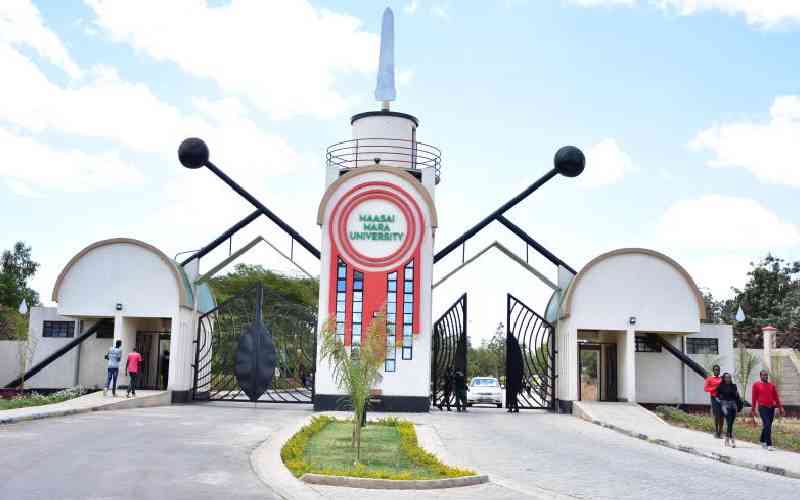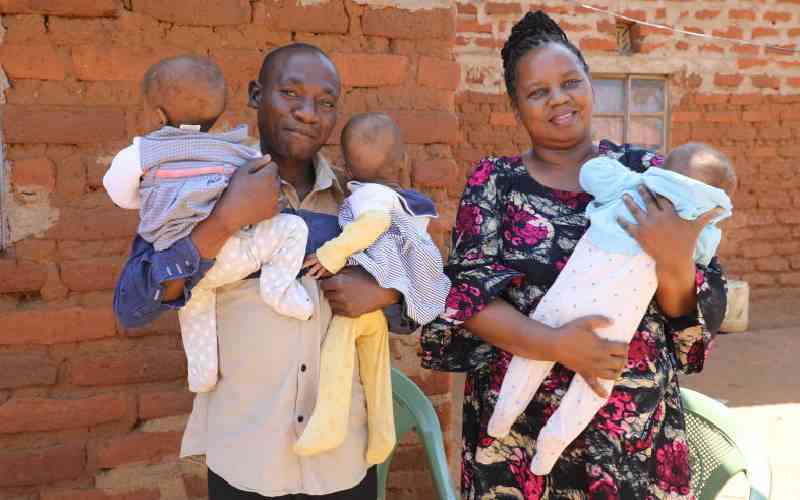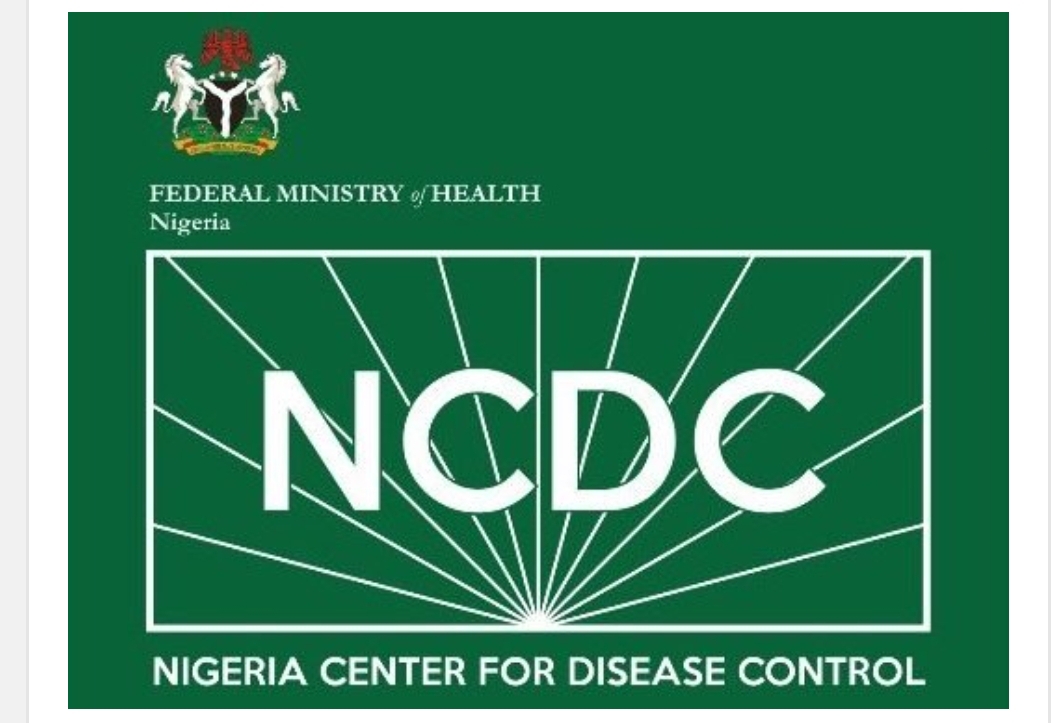Beyond BRCA: A scoping review of person-centred care for women diagnosed with a BRCA gene mutation
Beyond BRCA: A scoping review of person-centred care for women diagnosed with a BRCA gene mutation
- Correspondence to Leonie Emilia Witte; witte{at}eshpm.eur.nl
Women diagnosed with BRCA1/2 mutations face significantly elevated lifetime risks of breast and ovarian cancer. Due to the distinctive biopsychosocial implications of a BRCA diagnosis, the care trajectory for these women is highly personalised, yet their care needs frequently remain unmet. The aim was to provide a first overview of the evidence of women’s experiences with person-centred care (PCC) within BRCA care and their needs for further PCC implementation.
A scoping review, guided by the Preferred Reporting Items for Systematic Reviews and Meta-Analyses Extension for Scoping Reviews, was conducted.
Medline, Embase, Web of Science Core Collection, Cochrane Central Register of Controlled Trials, CINAHL Plus and Google Scholar were searched for literature published between January 2004 and February 2024.
Peer-reviewed, primary studies on BRCA and PCC using quantitative, qualitative and mixed-methods designs were eligible. The criteria were iteratively refined to include publications based on samples that were >80% female and >80% BRCA positive.
Titles and abstracts were screened with ASReview, a validated AI-driven tool. Data on PCC evidence and needs were extracted based on the eight Picker Principles of PCC and synthesised by describing themes within each principle.
Of the 3801 articles identified as potentially relevant, 18 were included in the review. PCC needs were more prevalent than evidence of their implementation. Most of women’s positive experiences with PCC focused on ‘clear information, communication and support for self-care’, while limited to no evidence existed for other principles. The highest needs were found for increased ‘emotional support, empathy and respect’, ‘attention to physical and environmental needs’, and ‘clear information, communication and support for self-care’. All articles reported demands for more holistic, yet personalised care, though PCC was not mentioned explicitly.
This review suggests a person-centred approach is relevant to improving the standard of BRCA care for women. The first evidence of women’s experiences with PCC demonstrates how care delivered with sensitivity and respect for individual backgrounds can support women throughout their BRCA trajectory. Yet, substantial unmet needs remain among female BRCA carriers, highlighting the importance of further research and PCC implementation to enhance the quality of postdiagnostic care.
Data sharing not applicable as no datasets generated and/or analysed for this study.
http://creativecommons.org/licenses/by-nc/4.0/
This is an open access article distributed in accordance with the Creative Commons Attribution Non Commercial (CC BY-NC 4.0) license, which permits others to distribute, remix, adapt, build upon this work non-commercially, and license their derivative works on different terms, provided the original work is properly cited, appropriate credit is given, any changes made indicated, and the use is non-commercial. See: http://creativecommons.org/licenses/by-nc/4.0/.
If you wish to reuse any or all of this article please use the link below which will take you to the Copyright Clearance Center’s RightsLink service. You will be able to get a quick price and instant permission to reuse the content in many different ways.
Women diagnosed with a deleterious mutation of the BRCA1/2 gene are exposed to a significantly increased risk of developing breast and/or ovarian cancer. The lifetime risk for breast cancer among female BRCA carriers increases from 13% up to 87%, while the lifetime risk for ovarian cancer rises from 1.2% up to 65%.1 2 The material condition in conjunction with an immaterial disease was found to create a sense of anticipatory loss among diagnosed women, exposing them to distinctive biopsychosocial challenges.3–5 Medical and reproductive decision-making, unmet informational needs and existential fears have been cited as the most strenuous elements of living with BRCA1/2.6–8 To mitigate long-term disease probabilities, current risk management strategies encompass increased surveillance, chemoprevention or prophylactic surgeries.9 10 Since each care journey entails distinct psychosocial and physiological considerations, BRCA management decisions are contingent on women’s individual characteristics and preferences beyond their medical status.11 12 Given these findings, BRCA care services should be inherently person-centred to advance the quality of care provided for women.
Person-centred care (PCC) focuses on the needs and values of the individual, promoting active participation in their own care.13 Instead of reducing patients merely to their clinical conditions, person-centred health providers view and treat individuals with a focus on their personhood.14 15 In practice, PCC contributes to individualised healthcare interactions, improved patient experience and well-being outcomes.16–18 However, women diagnosed with BRCA have reported their distinctive biopsychosocial needs are frequently insufficiently accounted for by health professionals.11 12 19 They may be either treated in the same cluster as patients with cancer or be refused patient status altogether due to the absence of a material disease.4 12 Insufficient sex-disaggregated data further impedes knowledge generation and the implementation of care that is respectful of the experiences of women specifically.20 21 Resultingly, they are often required to self-navigate their care.19
The BRCA patient journeys described in the literature are synthesised and visualised as The BRCA Care Continuum in figure 1 to provide the first comprehensive overview of the various care stages for women diagnosed with the genetic mutation. The model was derived from the Cancer Care Continuum22 and specifically adapted to the BRCA care context in the present paper. In the prediagnostic stages, women undergo a risk assessment and genetic testing, after which they may receive their diagnosis. The postdiagnostic stages begin with genetic counselling, leaving women with ongoing treatment choices between increased surveillance, prophylactic surgery and chemoprevention. For instance, evidence suggests that 50% of affected women choose preventive surgery, most commonly mastectomy or salpingo-oophorectomy.10 23 Beyond the inherent risks of major surgical interventions, these procedures entail significant physiological considerations for women, including the inability to breastfeed and the onset of medically induced menopause.10 24 25 Furthermore, prophylactic surgeries are associated with psychosexual functioning concerns related to body image, sexuality, childbearing and femininity.8 12 26 27 Women considering risk-reducing surgery (RRS) due to their BRCA status have described that sensitive issues, such as loss of sensation and decreased libido, are insufficiently addressed by healthcare professionals, despite being of high relevance to their quality of life.12 28 29 On the care continuum, the medical decision-making process is continuous and re-evaluative, as patient preferences regarding the treatment plan may change over time.7 29 Medically invasive procedures are concluded with post-treatment survivorship. Hence, while it may be argued that women diagnosed with a BRCA gene mutation are not considered patients unless they are diagnosed with cancer, the care continuum illustrates that these women still progress through numerous care stages regardless of their cancer status, outlining the need for health services that are considerate of women’s unique experiences and needs.
Figure 1
The BRCA Care Continuum. The BRCA Care Continuum depicts the various care stages for women diagnosed with the genetic mutation, involving a multidisciplinary team of professionals, including general practitioners, clinical nurse specialists, clinical geneticists, gynaecologists, surgeons, radiotherapists and medical oncologists.
However, limited understanding exists about the degree to which the provision and delivery of BRCA care is person-centred. With this scoping review, we aim to provide the first overview of the current state (of implementation) of person-centred principles in the care for women diagnosed with a BRCA gene mutation, and of the PCC needs among this population. Doing so, we rely on the eight prototypical Picker Principles of Person-Centred Care, from here on referred to as ‘dimensions’, encompassing ‘clear information, communication, and support for self-care’, ‘effective treatment by trusted professionals, ‘attention to physical and environmental needs’, ‘emotional support, empathy and respect’, ‘involvement in decisions and respect for preferences’, ‘involvement and support for family and carers’, ‘continuity of care and smooth transitions’ and ‘fast access to reliable healthcare advice’.30 We address a gap in the literature by examining the specific context of each PCC dimension, an approach that has been called for by previous research.18 Furthermore, by focusing exclusively on women, we intend to contribute to an environment in which female health concerns are acknowledged and addressed responsively. On this basis, our guiding research questions are:
A scoping review methodology was chosen for its appropriateness in finding evidence of PCC in a field of healthcare where this model of care is not common practice.9 11 12 19 Therefore, we sought to identify the PCC dimensions that are present in the studies but not necessarily proclaimed as such. In addition, we aimed to establish if the mention of the PCC dimension was based on the evidence of its implementation or the need within the articles. The methodology is guided by the Preferred Reporting Items for Systematic Reviews and Meta-Analyses Extension for Scoping Reviews (PRISMA-ScR) reporting recommendations.31 Since the study is based on standardised reporting guidelines, a protocol was deemed redundant.
The eligibility criteria entailed studies published in the last 20 years between 2004 and 2024, since the concept of PCC began manifesting in the literature in the early 2000s. BRCA received sudden public attention once the actress Angelina Jolie openly addressed her carrier status in 2013, increasing the genetic mutation’s public visibility.32 Articles were only included if they were accessible in English and peer-reviewed. Quantitative, qualitative and mixed-methods studies were eligible for inclusion to facilitate a comprehensive understanding of the evidence. Secondary analyses of literature, such as other reviews, were excluded. Grey literature, including information not produced by traditional publishing and distribution channels (eg, policy papers, reports and comments), was also excluded.
The research team devised a comprehensive search strategy together with a specialised medical librarian from the Erasmus Medical Centre (EMC). The search terminology encompassed all forms of ‘-centred care’ and keywords surrounding ‘BRCA’, ‘genetic counselling’ and ‘patient experience’ (see online supplemental file 1). The literature search was conducted on 22 February 2024 across five databases: Medline, Embase, Web of Science Core Collection, Cochrane Central Register of Controlled Trials and CINAHL Plus. Google Scholar was employed as an additional search engine to ensure comprehensive data coverage.
Screening was conducted using ASReview (https://asreview.nl/), an artificial intelligence-based tool for systematic reviews that has been validated by prior research.33–35 All potentially relevant records were imported into the software, which uses an active learning model to sequentially present publications ranked by relevance. First, the reviewer signifies if the manuscript is (ir-)relevant based on the title and abstract. Second, the tool selectively presents the following article, continuously improving its predictions based on previous choices. The terminal screening point is reached once it is estimated that a predefined percentage (95%) of relevant articles has been identified.36 Thus, the use of ASReview facilitates an efficient and transparent screening process while maintaining result quality.
All three authors were involved in the selection process. LW and CvD trained the ASReview model with 15 publications randomly selected by the programme. To mitigate selection bias, the two authors conducted the source selection independently. The model determined the terminal screening point at 15%. Hence, the authors could stop reviewing after 294 consecutive irrelevantly labelled articles. After ASReview indicated data saturation, LW manually checked 20 randomly selected publications out of the initial screening pool to ensure no crucial literature was omitted. No additional relevant items were found, confirming the algorithm’s screening endpoint.
The screening yielded 48 articles identified as potentially relevant by LW and/or CvD, and LW assessed the overlapping articles. Subsequently, LW, CvD, and JMC discussed the full-read eligibility of articles initially included by only one of them. In an iterative, collaborative process, the decision was made to update the eligibility criteria only to include publications based on samples that were >80% female and >80% diagnosed with BRCA (as opposed to other genetic mutations, ie, Lynch syndrome). Overall, 31 reports were assessed in full text by LW and CvD with refined, narrowed eligibility criteria. Articles had to be postdiagnostic, contain explicit evidence of at least one PCC dimension and reflect patient perspectives. Uncertainties were resolved with JMC.
A critical appraisal of sources of evidence was conducted, employing the Mixed-Methods Assessment Tool V.2018 (MMAT).37
Data were extracted by LW and supported by ongoing consultations and discussions with both co-authors. A table was constructed to synthesise and chart the study characteristics (title, authors, country of study origin and methodology), setting, care continuum stage and evidence on the implementation and the needs for PCC for each record. The Picker Principles of Person-Centred Care were employed as the guiding framework for the PCC evidence and needs.30 On this basis, LW identified all in-text references to PCC. Each dimension was marked only once per article, regardless of the number of attributable data items. However, dimensions could be classified both as evidence and needs. Data on the implementation and/or traces of PCC within BRCA care were classified as evidence, while data on the lack of and/or expressed wish for the implementation of dimensions were classified as PCC needs. For instance, a ‘desire to receive personalised information’ would be matched with the PCC dimension ‘clear information, communication and support for self-care’ and be classified as a PCC need. CvD and JMC reviewed the matching and classification and subsequently revised the classifications until consensus was achieved.
There was no patient or public involvement in this review.
The literature search yielded 7211 potentially relevant records, which were reduced to 3410 after the removal of duplicates, and 18 articles were included in the final analysis (figure 2). Based on the MMAT assessment, the quality of the research designs and data comprehensiveness was rated 100% for 16 studies and 85% for two studies.38 39 The study characteristics and results can be found in table 1.
Table 1
Overview of the results of the included studies
The studies were published between 2007 and 2023 and comprised qualitative (12/18; 67%), quantitative (4/18; 22%) and mixed (2/18; 11%) methodologies. Most were conducted in the USA (n=11). Others originated from the UK, Germany, Italy, Canada, Poland, France and Singapore (each n=1). In sum, this review is based on the data obtained from 1348 women diagnosed with a BRCA gene mutation. Of the included studies, 10 incorporated various stages of the postdiagnostic care continuum, while five explicitly focused on the treatment decision-making stage. The remaining three investigated women’s experiences following RRS.
A brief overview of the PCC results is provided in figure 3. The bar chart illustrates that more studies discuss the need for increased and enhanced PCC, while studies that report actual PCC implementation were identified less frequently. In the following, we present the findings on the evidence of and needs for the implementation of PCC per dimension.
Evidence
Eight articles contained evidence on the provision and benefits of reliable and accessible information.3 38 40–45 Information was identified as a tool of empowerment for women, enabling proactive management of their BRCA status.3 40 45 Three studies further highlighted healthcare providers’ use of evidence-based information sharing to aid women in making informed treatment decisions, with some contextualising the information to their patient’s individual circumstances.38 43 44 Additionally, Kautz-Freimuth et al 42 demonstrated that evidence-based decision aids in BRCA care management provided patient-centred benefits, enhancing women’s medical knowledge and value clarity while mitigating decisional conflict.
Needs
11 articles outlined the need for clear information, effective communication and support for self-care.7 38 40 41 43 46–51 Six articles indicated that unmet information needs, conflicting medical recommendations and unclear expectations exacerbated BRCA-related uncertainty, thus hindering treatment decision-making.7 40 41 46 49 51 These studies specifically noted informational gaps concerning surgical options and hard-to-raise topics like sexual well-being and preimplantation diagnostics (PGD). Hovick et al,47 Hurley et al 48 and Yuen et al 51 further highlighted the need for more personalised information, accounting for individual variations in women’s BRCA trajectories. In addition, Dean et al 46 suggested the timing of information delivery was equally relevant as its content in effectively meeting informational needs.
Evidence
Four studies contained evidence of positive therapeutic relationships between women and their treating physicians.3 41 44 50 Specifically, Vande Perre et al 50 found over 75% of women were content with their general practioner’s (GP) role in their care. Other studies elaborated on the benefits of patient satisfaction with their treating professionals, including increased trust and confidence in medical advice.3 44 Hoskins et al 41 highlighted that specialised practitioners, such as geneticists, could provide additional reassurance, fostering trusted relationships.
Needs
Ten articles identified a need for better effective treatment by trusted professionals.3 40 41 43 44 48–52 A perceived lack of BRCA knowledge among physicians decreased women’s confidence in their treatment plans, frequently leading women to question the competencies of health professionals from whom they received treatment.40 41 48 51 McCullum et al and Puski et al outlined that ambiguous medical recommendations compounded this issue and caused frustration among women, emphasising their need for clinically appropriate care pathways that inspire a sense of trust.43 44 Hurley et al emphasised that discussing sensitive topics such as PGD required a particularly high level of trust of women in their healthcare professionals.48
Evidence
Three studies discussed that attention to physical and environmental needs leads to enhanced patient well-being.38–40 Alamouti et al and Hooker et al found an increase in patient satisfaction when physical needs, that is, sexual well-being, were incorporated into BRCA management decisions, especially for women choosing RRS.38 39 Hesse-Biber40 noted that successfully performed RRS further reduced long-term uncertainty and was perceived as empowering when physicians adequately addressed physical needs and expectations.
Needs
A need for increased attention to physical and environmental needs was identified in 11 articles.3 7 38 40 43–45 49 51–53 Ten of these articles highlighted a need for better pain management and personal care following RRS, addressing surgical side effects, potential complications and invalidating symptoms.3 7 38 40 43–45 49 51 52 Alamouti et al, Dean and Fisher, Hesse-Biber and McCullum et al underscored the need for improved expectation management regarding postsurgical body image,7 38 40 43 while Massarotti et al and Michałowska emphasised the importance of addressing the implications of RRS on sexual life and satisfaction.49 52 Additionally, four articles delineated the symbolic significance of the breast for women, which reinforced the demand for attention to physical needs and the maintenance of dignity.7 44 45 51
Evidence
Three studies described evidence of compassionate and holistic care delivery.41 44 50 Hoskins et al and Puski et al outlined that physicians could provide women with additional reassurance and emotional support throughout the postdiagnostic care stages by showing empathy.41 44 Furthermore, Hoskins et al emphasised GP’s abilities to provide psychological support due to personal, perhaps long-standing relationships with their patients, allowing them to recognise their individual needs.41
Needs
12 articles highlighted a need for care delivered with sensitivity and respect.8 10 39 41–45 48–51 Seven studies reported that the immediate and extreme distress experienced by women was insufficiently addressed by care providers.3 7 43–46 52 Specifically, these studies emphasised the demand for the compassionate delivery of biopsychosocial information, considering women’s emotional needs beyond mere biomedical details. Puski et al, Hoskins et al and Yuen et al found the lack of psychosocial support was particularly notable among younger women and women undergoing mastectomies, who required a more caring and holistic approach.41 44 51 Dibble et al further outlined the importance of healthcare professionals acknowledging and respecting women’s fears.3 They advocated for the importance of sensitivity training to improve emotional support throughout the postdiagnostic care stages.
Evidence
Three articles contained evidence of the implementation of shared decision-making processes within BRCA care.40 41 44 Hoskins et al showed that women’s autonomy within the healthcare system could be strengthened by considering their individual preferences.41 Hesse-Biber further highlighted the advantages of reciprocal relationships, emphasising that respect for cultural or spiritual values in treatment decisions enhanced patient satisfaction.40
Needs
Eight articles mentioned the need for more substantial involvement in decisions and respect for women’s preferences throughout the post-diagnostic care stages.3 7 38 40 43 44 46 48 Dean and Fisher delineated the influence of life-span phenomena, such as family planning, on medical decision-making, indicating a need for care that is considerate of each woman’s background.7 Five articles identified demands for more time in the decision-making stage of the care continuum to enable women to make value-aligned choices and evaluate them together with physicians.3 7 40 46 48 Hesse-Biber et al further illustrated the need for reciprocal relationships, noting that forceful medical advice and a ‘one-size-fits-all’ approach deprived women of their autonomy and thereby created feelings of disempowerment.40
Evidence
The significance of familial and social network support across the care continuum was emphasised by three studies.44 50 53 Ersig et al delineated how shared coping alleviated emotional hardships for all individuals involved in the care process, particularly considering the shared risk inherent in family relationships.53 Puski et al noted that GPs proactively engaged family members, encouraging them to participate in screening too.44
Needs
Two articles outlined the necessity of implementing support strategies for familes and caregivers.3 53 Ersig et al detailed the emotional strains placed on caregivers and their relationships, identifying the need for support for caregivers themselves.53 Additionally, Dibble et al highlighted demands for integrating family involvement to enhance information sharing.3
Evidence
Alamouti et al provided one example of care journey optimisation by establishing a multidisciplinary one-stop clinic specifically designed for BRCA management.38 This clinic facilitated seamless progression through different care stages under the guidance of a multidisciplinary team, which included geneticists, breast and plastic surgeons and oncologists.
Needs
Seven articles mentioned the need for continuity of care.3 39 44 45 48 50 52 Dibble et al emphasised the need for dedicated physicians to guide women throughout the postdiagnostic care stages, acknowledging the chronic nature of increased cancer risk.3 Three articles underscored the demand for consistent information and treatment planning, for example, via follow-up sessions for complex topics like PGD.39 44 48 Other articles identified several reasons for the need for continuous and integrated support systems. These included challenges in decision-making, adherence to care plans and siloed surgical competencies.45 52 Vande Perre et al also noted significant communication gaps between healthcare providers, which hindered seamless care transitions and thus increased the need for sustained support.50
No evidence was found in any of the studies.
Needs
Two articles outlined women’s need for improved access to timely, high-quality care.41 45 Difficulties in scheduling appointments were reported, particularly concerning radiology services such as mammograms. Hoskins et al found that these logistical barriers contributed to delays in treatment, exacerbating women’s concerns about their BRCA trajectory and thus invigorating their demand for accessible health services.41 In addition to financial and time constraints, Tezak et al found limited availability of appropriate professionals further increased the need for fast access to reliable healthcare.45
This scoping review explored the evidence of implementation and needs for PCC dimensions in articles studying women diagnosed with a BRCA gene mutation. As the cancer care continuum22 did for cancer care, the present adapted version provides the first comprehensive overview of the BRCA care journey for women, making a valuable contribution to the field by facilitating a holistic understanding of the fragmented care stages. Our findings demonstrate how person-centred strategies can be leveraged to improve the quality of postdiagnostic care, providing a novel overview of the PCC evidence and needs across different stages of the BRCA care continuum.
Most evidence was found for ‘clear information, communication and support for self-care’, substantiating the benefits of contextualising evidence-based information to individual circumstances as previously recommended by genetic counselling research.11 19 Limited evidence of ‘effective treatment by trusted professionals’ supports prior research documenting a lack of decisional assistance, whereby our results indicated additional guidance provided by physicians could support women in medical decision-making.6 28 Although scant, evidence on the implementation of ‘attention to physical and environmental needs’, ‘emotional support, empathy, and respect’, ‘involvement in decisions and respect for preferences’ and ‘involvement and support for family and carers’ highlighted positive outcomes for women’s health and care. Our findings extend the review of PCC benefits by Rathert et al by outlining specific dimensions supporting BRCA patients’ well-being. Moreover, our results underscore the relevance of the WHO’s global strategy on PCC from a policy perspective.15 Only one case of evidence for ‘continuity of care’ was found, lending support to prior criticisms of the scarcity of seamless BRCA care journeys. Similarly, corroborating Hayes et al, who identified a need for timely, responsive BRCA care delivery services, no evidence existed for ‘fast access to reliable healthcare advice’.12
More literature has been published on the needs for PCC dimensions than on their implementation, highlighting the relevance of BRCA care quality improvement. Most studies addressed the need for enhanced ‘emotional support, empathy and respect’, ‘attention to physical and environmental needs’, and ‘clear information, communication and support for self-care’, augmenting the importance of viewing women as persons first instead of reducing them merely to their medical conditions, as emphasised by Ramlakhan et al.17. The high demand for the implementation of these dimensions substantiated the weight of the psychological distress evoked by the anticipatory loss and uncertainty among women diagnosed with a BRCA gene mutation described in qualitative research.4 5 Furthermore, high needs for ‘effective treatment by trusted professionals’, ‘continuity of care and smooth transitions’, and ‘involvement in decisions and respect for preferences’ corroborate Ekman et al’s, who advocated for consistency in patient-provider relationships and shared decision-making.14
Our findings thus reflect the scarcity of person-centred approaches within the literature on BRCA care for women. To enhance patient care quality and safety, it is imperative for both research and clinical practice to address women’s distinct experiences and prioritise their biopsychosocial needs. Achieving a comprehensive understanding of their views and preferences regarding PCC will require more in-depth, qualitative and triangulated research methodologies.
As an under-researched area, the review was limited to 18 articles, of which only one mentioned PCC explicitly.39 Hence, the results merely provide an overview of the field, but no practice-oriented care implications can be derived due to the slim body of evidence and the study’s methodology, which inherently allows only for descriptive results. Most included articles were qualitative, allowing for deeper insights into women’s experiences but overall reducing the generalisability of results. However, the quality assessment of the articles revealed maximum scores that demonstrated the merit of the articles. Lastly, the selection of sources of evidence may be apt to a selection bias due to the use of ASReview. While prior research has validated the programme, the predetermined terminal screening point is not evidence-based and introduces the risk of potentially missing relevant articles.
This review offers a first analysis of the current state of evidence and needs for PCC implementation in the postdiagnostic BRCA care stages, exploring a novel avenue for improving the standard of care for women diagnosed with a BRCA gene mutation. Overall, there is limited evidence of PCC dimensions in research, yet the results indicate positive outcomes when a person-centred approach is implemented and women-specific health concerns are acknowledged. More literature has been published on women’s needs for PCC than on their actual experiences with this model of care, highlighting the importance of further research and implementation. More PCC-specialised and experimental studies are necessary to lead to clear policy improvements and practice recommendations, ultimately fostering care systems that are both clinically and empathetically aligned with women’s experiences.
Data sharing not applicable as no datasets generated and/or analysed for this study.
Not applicable.
Not applicable.
We would like to thank Christa Niehoet from the Erasmus Medical Center-Medical Library for her support as an information specialist.












